Open your average world history book, and you’ll find but a paragraph or two on the Reformation. The event appears a small drop on the timeline, but the Christian Church knows better.
Since the past is best explored through the people who lived it, meet 25 men and women passionate about the Reformation re-discovery of the Gospel—either for or against it. These iconic individuals used their unique vocations to create theological and cultural tidal waves beginning in the sixteenth century and continuing today. See how the gracious Word of the Lord had the final word in bringing the “it’s still all about Jesus” proclamation to the corners of Europe and beyond.
Download reproducible bulletin inserts, biographical handouts, and Bible studies for each unforgettable face of the Reformation era.
Andreas Karlstadt
The Chancellor of the University of Wittenberg, Andreas Karlstadt awarded Martin Luther his doctorate in 1512. Karlstadt was a defender of Luther, but eventually found Luther too moderate. To the issue of adoration of relics, Karlstadt urged that even priestly vestments, altar furnishings, and crucifixes distracted from a direct relationship with Christ, and he challenged the real presence of Christ in Communion.
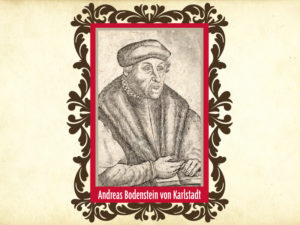
Charles V
As Holy Roman Emperor, Charles V’s reign was marked by a constant struggle between Catholics and Protestants. He ruled during critical points in the Reformation, and despite his attempt to snuff out the Reformation, it more than thrived and survived.
Learn more about Charles V on KFUO’s Worldview Watch: Historically Speaking.
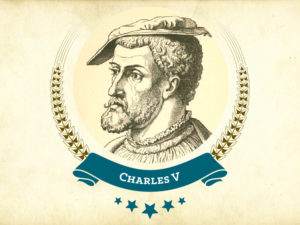
Erasmus of Rotterdam
As a prolific young scholar of the Enlightenment, Erasmus was the most important representative of his time of humanism in Northern Europe. Early in the Reformation many saw Martin Luther as another Erasmus. But while Luther was a man of vocation and committed to his duty to teach the Word of God, Erasmus was a man of freedom and independence, who was released from his monastic vows by the pope. Erasmus’ influence waned, as Luther became more popular.
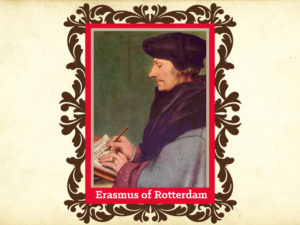
Frederick the Wise
A devout Catholic, Frederick the Wise became “elector” of Saxony upon the death of his father. Frederick had castles in Saxony, including Wittenberg and Wartburg, which would become important landmarks in the life of Martin Luther. Though he participated in the selling of indulgences, Frederick objected to the selling of indulgences for the building of St. Peter’s Basilica in Rome. He kept an open mind and listened to Luther’s thoughts, and even hid Luther in the Wartburg castle after the Diet of Worms.
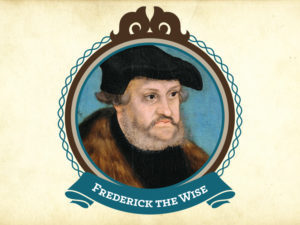
George Spalatin
Put in charge of the castle library in Wittenberg, Georg Spalatin—who was born Georg Burckhardt but adopted the surname as a derivative of his birthplace, Spalt, Germany—became friends with Martin Luther, exchanging letters and serving as Luther’s protector from the demands of Rome.
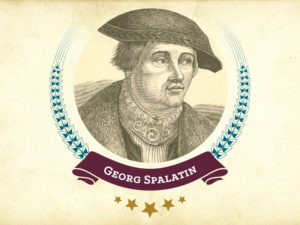
Hans and Margarethe Luder
As typical parents, Hans and Margarethe Luder were critical players in forming the reformer, their son Martin. Their high expectations and strict punishments for even the smallest offense helped teach the formative lesson: that all transgressions must be atoned for.
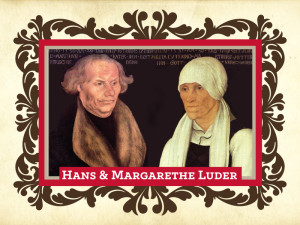
Jan Hus
More than 100 years before Martin Luther, Jan Hus, a priest, took a stand opposing the many abuses he saw in the Roman Catholic Church. Excommunicated in 1412, he was imprisoned for his heresy and in 1415 he was sentenced to death and burned at the stake. Like Luther later would, Hus inspired a reform movement that could not be stopped.
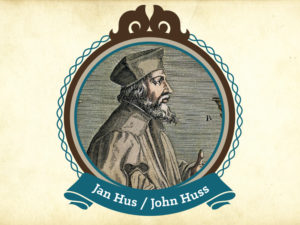
Johann Eck
At one time a friend of Luther’s, Johann Eck became Luther’s staunchest adversary. Their debate in Leipzig proved to be a critical point in defining the authority and infallibility of the Pope and Scripture, the issue at the heart of the Reformation.
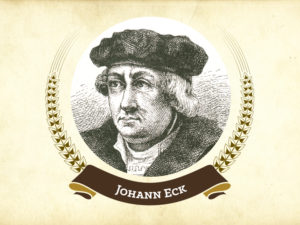
Johann Tetzel
Meet Johann Tetzel, a Dominican monk who specialized in the selling of indulgences, which are cancellations of all or part of punishments for sins. Though not the only one selling them, he particularly drew the ire of Martin Luther, and when the pope only condoned and defended the practice, that propelled Luther to fight against the root of this behavior.
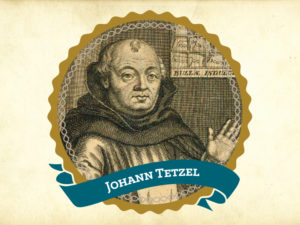
Johann von Staupitz
As Luther’s mentor and confessor, Johann von Staupitz knew all about Luther’s struggle with being “holy enough.” He encouraged Luther to study for his Doctor of Theology degree and had him come teach at the university in Wittenberg. That’s where Luther became aware of the true Gospel—and that was the very beginning of the Reformation. Staupitz had no idea what his advice to Luther was unleashing!
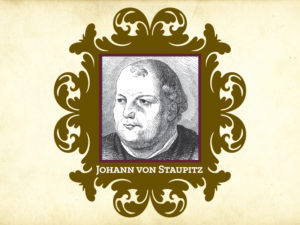
Johannes Bugenhagen
As pastor at the Wittenberg city church, St. Mary’s, Johannes Bugenhagen was more than just a friend to Martin Luther; he was Luther’s pastor and confessor. Swayed by Luther’s writings, Bugenhagen would apply Luther’s theology to a generation of congregants and students. He eventually developed a close relationship with Luther, performing the marriage of Luther and Katharina von Bora, preaching at Luther’s funeral, and caring for Katie and their children after Luther’s death.
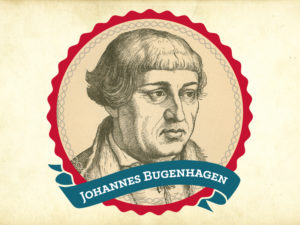
Johannes Gutenberg
Communicating news and information to the masses. Today, it’s popularly done digitally, perhaps via text, or via apps, or via social media. Before that, it was spread via the television airwaves, and radio airwaves. And before that, it was spread in printed form: magazines, newspapers, pamphlets, thanks to Johannes Gutenberg. It was his idea of moveable type that fueled the spread of the Reformation.
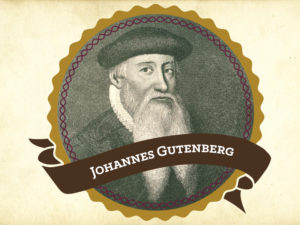
John Calvin
A second-generation reformer, John Calvin was a French theologian who would forward the Protestant movement of the time and become the father of Calvinism. Influenced by Luther’s writings, Calvin focused on finding common ground between Luther and Ulrich Zwingli.
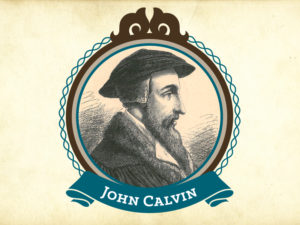
Justus Jonas
A faithful teacher of God’s Word and Luther’s closest friend, Justus Jonas greatly assisted churches in times of transition during the Reformation. He shared Luther’s fiery personality and possessed strong translation, organization, logical-thinking, and preaching and teaching skills. His dedication to the Reformation never wavered—even when he was forced to become a wandering preacher near the end of his life.
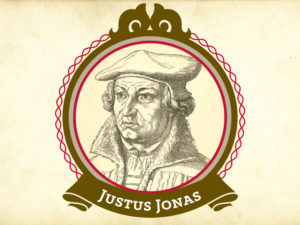
Katharina von Bora
A woman of considerable strength and courage, Katharina von Bora left her convent life when she learned from Martin Luther’s writings that Christ’s grace came through faith alone. The freedom she gained from this knowledge also allowed her to marry the man whose writings had taught her about God’s saving grace. As manager of the Luther household, she kept everything in order so her husband could focus on theology.
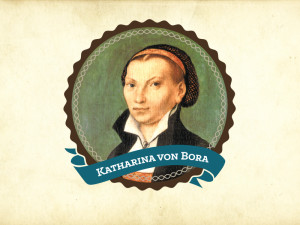
Knight George (a.k.a. Martin Luther)
Trading in his monk’s robe for the attire of a knight, Martin Luther took on the alias of “Knight George” during a 10-month exile (May 1521–March 1522) in the Wartburg castle following the Diet of Worms. Emperor Charles V had declared Luther to be a heretic and an outlaw with a price on his head—an ideal reason to temporarily retreat at the height of religious tension. Life in seclusion was a dark time for Luther, and he found solace in writing devotionals and commentaries, and translating the New Testament from Greek into German.
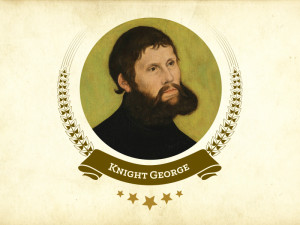
Lucas Cranach
If Martin Luther was the writer of the Reformation, then Lucas Cranach was its painter. The Cranach studio produced more than a thousand paintings, most notably for the Small Catechism and Luther’s German translation of the Bible. Cranach’s use of his artistic talents to glorify God exemplify that all vocations in life are necessary and God-pleasing, including those in fine arts.
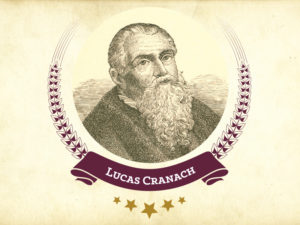
Martin Chemnitz
Known as the “second Martin”, Martin Chemnitz extended the Reformation beyond its origination and to the next generation. The author of the Formula of Concord, Chemnitz was instrumental in detailing the doctrines of the Reformation and the standard of Lutheran unity.
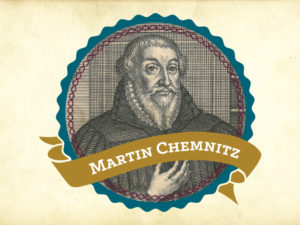
Martin Luther
Despite his “holy” life as a monk, Luther constantly doubted his salvation. Relief came in his study of Paul’s letter to the Romans, which revealed to him the pure Gospel. But this also sparked concerns about the church’s practice of selling indulgences, which contradict the Gospel. Feeling a need to protect his flock and start a scholarly debate, Luther posted his 95 Theses in Wittenberg. His writings were distributed throughout the land, sparking the events that began the Reformation.
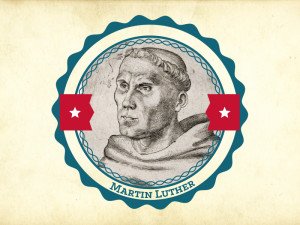
Martin Luther (Last Days)
In his later years, Martin Luther returned to Wittenberg, internationally known and sought after for guidance. His role later in life to encourage and instruct, Luther translated the Bible into German, and wrote his Small and Large Catechisms during this period.
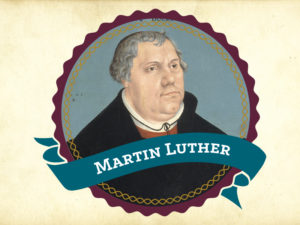
Nikolaus von Amsdorf
Luther’s faithful friend and defender, Nikolaus von Amsdorf was instrumental in turning Magdeburg into a bastion for Lutheranism. He was involved in many theological controversies, sometimes edging toward theological extremes in his passion for defending Luther’s teachings. His staunch focus on God’s work for our salvation kept the Lutheran movement from drowning in the tumultuous years that followed Luther’s death.
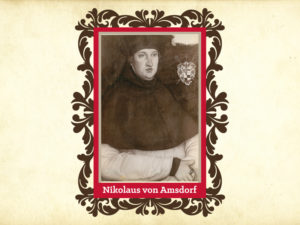
Philipp Melanchthon
This novice Greek professor at the University of Wittenberg quickly grew into a gentle giant of the reform movement after he met Luther. Philipp Melanchthon’s vital contribution to the Reformation was to systematize Luther’s ideas, defend them in public, and make this theology the basis of religious education. Get to know this skilled professor, and in the Bible study, see how his hymn text “Lord Jesus Christ, with Us Abide” illuminates his faith journey—and ours.
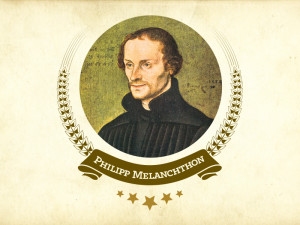
Pope Leo X
Giovanni de’ Medici lived an extravagant lifestyle, a lifestyle that he continued in his papacy as Pope Leo X. But to maintain that lifestyle and to offset the heavy costs of construction spending and wars with France, he approved of the selling of indulgences, the practice of purchasing documents of forgiveness. Martin Luther challenged that practice, being excommunicated for his belief, and the Reformation was born.
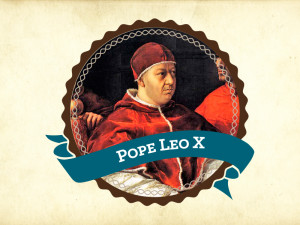
Thomas Muntzer
Thomas Muntzer was a radical reformer who spent a brief time with Martin Luther in Wittenberg. A priest, Muntzer was drawn to and accepted many Reformation ideas, but came to believe and to preach that true Christianity could only be achieved through the action of the Holy Spirit on the human heart, a conflict with the Lutheran doctrines of justification by faith and Sola Scriptura.
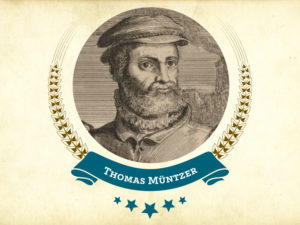
Ulrich (Huldrych) Zwingli
Ulrich Zwingli is a complicated character in the story of the Reformation. Influenced by Erasmus’s rational approach to Scripture, he became a leader in reforming the Swiss church. However, he and Luther did not become allies because they could not agree on whether the Sacrament of the Altar is the true body and blood of Christ.
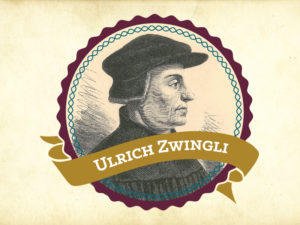
Visit the Lutheran Reformation page to view additional resources